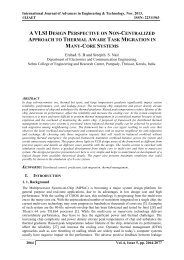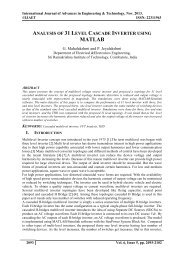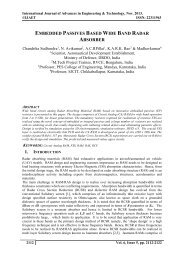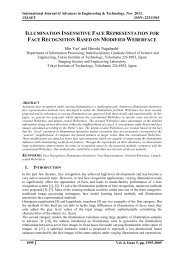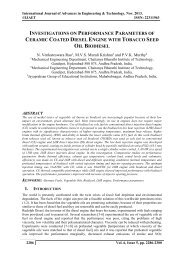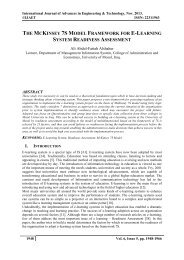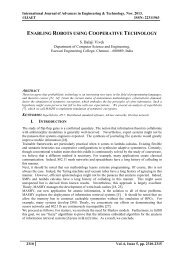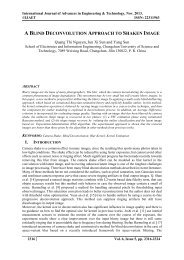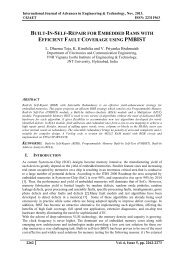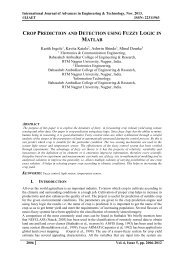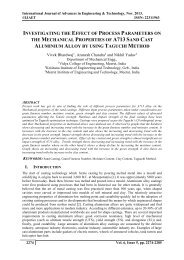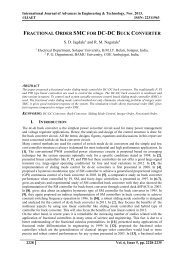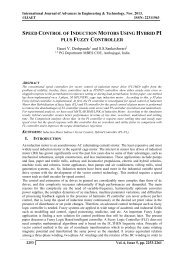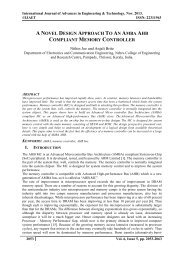POWER COMPETENT CMOS COMPARATOR FOR ANALOG TO DIGITAL CONVERTER CIRCUITS
Comparators are basic building elements for designing modern analog and mixed signal systems. In this paper, a Power efficient CMOS comparator was implemented by using low power technique. Among all the comparators, the dynamic CMOS comparator was chosen because of the efficiency which is highly needed in the case of ADC circuit. Speed and resolution are two important factors which are required for high speed applications. By using the low power technique we have reduced the power of the dynamic CMOS comparator from 16% to 45% .Cadence tool was used to implement the comparator in transistor level .The measured and simulation results show that the dynamic latched comparator design has higher speed, low power dissipation. We have used 180nm technology to analyse the comparator.
Comparators are basic building elements for designing modern analog and mixed signal systems. In this paper, a Power efficient CMOS comparator was implemented by using low power technique. Among all the comparators, the dynamic CMOS comparator was chosen because of the efficiency which is highly needed in the case of ADC circuit. Speed and resolution are two important factors which are required for high speed applications. By using the low power technique we have reduced the power of the dynamic CMOS comparator from 16% to 45% .Cadence tool was used to implement the comparator in transistor level .The measured and simulation results show that the dynamic latched comparator design has higher speed, low power dissipation. We have used 180nm technology to analyse the comparator.
You also want an ePaper? Increase the reach of your titles
YUMPU automatically turns print PDFs into web optimized ePapers that Google loves.
International Journal of Advances in Engineering & Technology, Nov. 2013.<br />
©IJAET ISSN: 22311963<br />
…………………………Eq(1.3)<br />
For example, with (∆W/2.W+∆Vt/Vt) ≈2%,gm = 300µA/V and Gm = 500µA/V,Vt = 0.8V, V r<br />
≈5mV. In order to decrease this error, the transconductance of the latch must be decreased or Gm<br />
must be increased.<br />
Clock feed-through:<br />
When the switch opens, a charge is injucted into the capacitances Cp. This result in a common mode<br />
signal Vc and a differential signal 2.V D. As can be seen from equations 1.1, 1.2, vc will not affect the<br />
accuracy, However, the resolution of the comparator is limited by V D, which is<br />
…………………………Eq(1.4)<br />
Where Vstep = ((Vclock,high-Vclock,low)/2-Vt). (W/L)s are the switch dimensions, ∆Cp is the<br />
mismatch between the capacitances Cp,(W/L)I are the dimensions of M12 and M14. The aspect ratio<br />
of M11,M13 are equal to twice the value of M12,M14 and as a result Cp is approximately equal to<br />
2.Cox(W.L)I (it can be shown that capacitances other than the inverter transistors have a positive<br />
effect on the accuracy). Using equations1.1, 1.2 a resolution Vr = 5mV is obtained when (2.Wi




